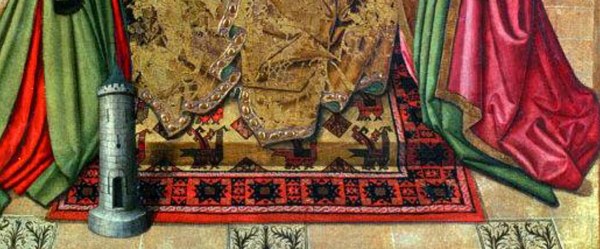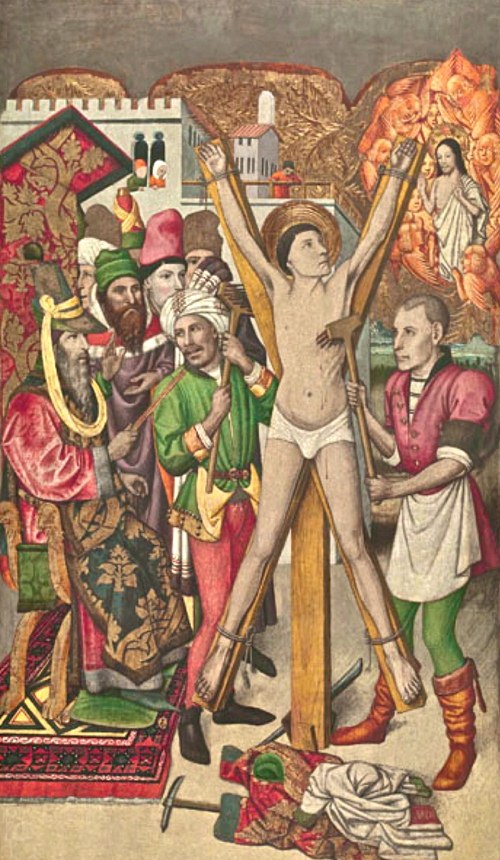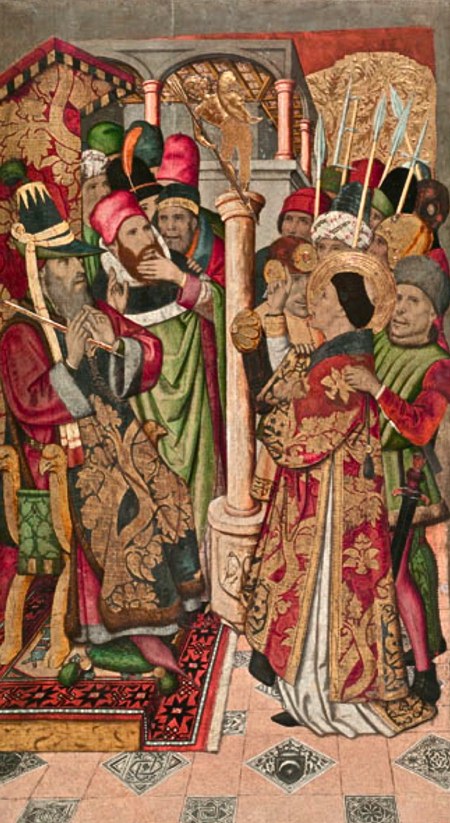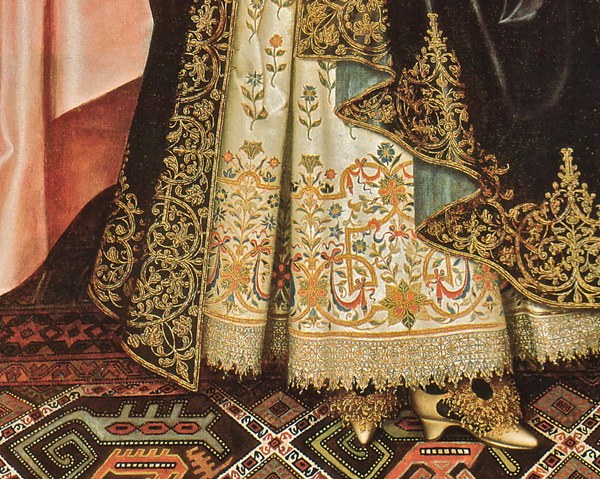Hi Yohann,
There is perhaps a clue pointing at a western-, more precisely Spanish origin of this strange rug. A hypothesis which would contradict neither an Islamic- nor a western influence.
Note the border of «stars» on a red background: There are a few paintings featuring a very similar border, where the painter’s nationality and / or other motifs of the rug make a Spanish origin of the rug quite credible.
In particular the Spaniard J. Huguet (mid fifteenth century) used at least three different studio props, all featuring a star border on red background.
Fig 1: J. Huguet. Virgin and Child. Rug with «Cockerel motif». 1445. MNAC Barcelona.
 Fig 2 and Fig 3: J. Huguet. Martyrdom of St Vincent. 1455-1460. MNAC Barcelona.
Fig 2 and Fig 3: J. Huguet. Martyrdom of St Vincent. 1455-1460. MNAC Barcelona.


In a more recent painting (1615) by W. Larkin (already shown in a previous essay), we can notice in the background a rug featuring both a «star» main border
and the undulating motif which, according to Onno Ydema, is an indication of gothic influence.
FIG 4: W. Larkin. Lady Dorothy Cary. Detail. 1615. Kenwood House.

Star borders, are apparently extremely rare in extant fourteenth to sixteenth century Anatolian rugs. Surprisingly so, given the frequency of all kind of star motifs in their field. The only other case of frequent use of «star borders» I am aware of, are nineteenth century Caucasian Tchelaberd and Chondsoresk rugs.
Sure this does not amount to a proof of the Spanish / Al Andalus origin of this puzzling «fish scale» or «palmette tile» rug, but it makes do, perhaps, for a credible theory.
Best regards
Pierre